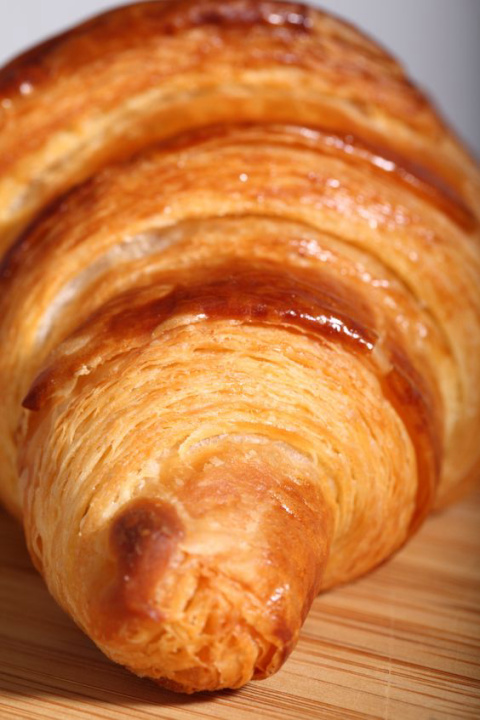
A croissant (UK: /ˈkrwʌsɒŋ/;[3] US: /krwɑːˈsɒ̃/, /krəˈsɒnt/; French pronunciation: [kʁwa.sɑ̃] (listen)) is a buttery, flaky, viennoiserie pastry of Austrian origin,[1] named for its historical crescent shape. Croissants and other viennoiserie are made of a layered yeast-leavened dough. The dough is layered with butter, rolled and folded several times in succession, then rolled into a thin sheet, in a technique called laminating. The process results in a layered, flaky texture, similar to a puff pastry.Crescent-shaped breads have been made since the Renaissance, and crescent-shaped cakes possibly since antiquity.[4] Croissants have long been a staple of Austrian and French bakeries and pâtisseries. The modern croissant was developed in the early 20th century. In the late 1970s, the development of factory-made, frozen, pre-formed but unbaked dough made them into a fast food that can be freshly baked by unskilled labor. The croissant bakery, notably the La Croissanterie chain, was a French response to American-style fast food,[5] and as of 2008, 30–40% of the croissants sold in French bakeries and patisseries were baked from frozen dough.[6]
Comments
Add Comment